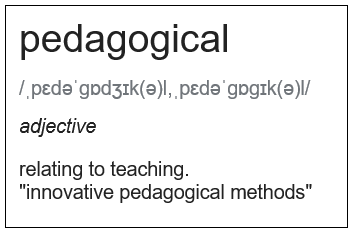Reflection of the week: Metaphors Used to Understand the Digital
By Jesse van der Merwe,
“Information is fairly formless, so almost everything we do online we do with some kind of metaphor”- Judith Donath, Harvard’s Berkman Center for Internet and Society. [1]
Why Did We Start Using Metaphors?
During the early rise of the digital age, a lot of people were sceptical about this new concept of ‘cyberspace’. During this time, people who were excited about cyber space had to try and explain these new concepts to people who didn’t understand them at all. It was here that it became the norm to use everyday metaphors to describe the ‘complicated’ and abstract workings of almost anything digital.
An example of this is the “superhighway” metaphor chosen to describe the internet. This word is an interesting area of debate as some argue that it was chosen to steer people away from thinking of cyberspace as an online utopia, and towards a more mundane and everyday online space. Since the internet is described as a highway, it could be argued that this implies that the government can, and should, regulate what people do on it. This ‘superhighway’ design also implies that information (now understood as intellectual property) is for moving and selling, and not freely copying and distributing. Another view on this word is that while governments and the like try to bring cyberspace under control, the information “superhighway” tries to keep it free. Tim Wu coined the term “net neutrality” and uses terms such as ‘fast lanes’, ‘slow lanes’, ‘tolls’, etc. to try and explain why people should care about this “net neutrality”.
Another extremely popular metaphor used in the cyberspace (cyberspace being a metaphor itself) world, mainly due to Amazon’s launch of its Elastic Compute Cloud service in 2006, is “THE CLOUD!” What is this magical thing??? What a weightless word??? So vague??? Yet powerful??? Your data is up there ‘somewhere’, in a ‘better place’. This is far from reality – remote servers are HUGE, LOUD and require a lot of energy and upkeep, let alone backups and security.
Wikipedia itself says that ‘Big Data’ is a field that treats ways to analyse, systematically extract information from, or otherwise deal with data sets that are too large or complex to be dealt with by traditional data-processing application software. Gartner’s definition, circa 2001, which is still the go-to definition is “big data is data that contains greater variety arriving in increasing volumes and with even-higher velocity. This is known as the three Vs.” It seems as if ‘Big Data’ is seen as a torrent, flood or ocean of data – a natural resource that must be harnessed [1]. Rowan Wilken, a professor at the Swinburne University of Technology, worries that this metaphor [of Big Data] obscures the fact that this data is often created by users.
Why Do We Still Use Metaphors Today?

Metaphors are still used today to describe almost everything in a digital space. Even in the last sentence, the word “space” is a metaphor: it is used to describe something that does not take up physical space at all. Metaphors are used to make it easier for people to ‘picture’ anything digital that cannot be easily pictured. Metaphors are STILL often used pedagogically today for both users and creators of software.
Digital creators nowadays do not have to explain entire concepts to their audience, as described above, but instead use metaphors and the like to improve their users’ experiences (often without the users even realising). Such creators/programmers/etc. often rely on our everyday knowledge of an ordinary thing to help users to infer how their interaction with the digital thing will commence. A popular and somewhat obvious example is shown in online shopping experiences: the “Add to Shopping Cart” button. This button suggests that selected items are placed in shopping carts, and from this we, as users, can safely assume that after selecting the items to be purchased and putting them in my cart, we will then have to go to checkout and pay for the items. Even though the secondary process mentioned above of ‘checking out’ is not explicitly stated, the user still expects that it will happen, why? This is because of the natural assumption made by the user that shopping online will work just like shopping in a physical store. Therefore from these four simple words – “add to shopping cart” – the user gets as much information as a couple of paragraphs of text in documentation/tutorial training/etc. For the user, this metaphor is simply pre-existing – it is up to the designer to enforce the similarities in the website’s programming.
Another example: virtual memory. A computer sometimes has to address more memory than the amount physically installed on the system, it does this by using a section of the hard disk that’s setup to emulate the computer’s RAM – which is called ‘Virtual Memory’. The beauty of this metaphor and its implementation is that the user does not even need to notice the difference.
A slightly less obvious example, that is sometimes overlooked, is that of high-level programming languages. These languages are RIFE with metaphors. This is because machines are now so advanced that most programmers cannot, or rather, do not want to have to deal with the complicated (and not understandable) machine language (or even lower-level programming languages like assembly). Thus, most of the functionality in high-level programs is abstracted (often with metaphors) in order to explain what is happening in the low-level language, so that programmers can understand the consequences of the code they write.
A specific example: dynamic non-local exits. This is when an executing procedure brought about by an exceptional event (system error or user abort) requires non-normal processing (or in more simple terms – the computer says “yeet I can’t do the thing” and crashes). These dynamic non-local exits are usually discovered at lower levels of complicated code and thus cannot be handled there in a manner that is meaningful to the programmer. This gave rise to the catch and throw metaphor – the concept of physically catching and throwing an error or crash is projected onto the concept of dynamic non-local exits thus making it more understandable and easier to use for the programmer.
An interesting quote from the Journal of Applied Logic article “Metaphor in computer science” [2] is:
“The programmer’s conceptual network will accommodate the catch/throw construct as simply a technical abstraction for a complex transfer of control. Her understanding and utility with the concept will not depend on any metaphorical projection. Facility with the new concept unencumbered by metaphorical baggage is part of what it means to be a programming expert.”From what I can understand, this is referring to how, for a programmer to become an expert, they must be able to adapt to new concepts, without being limited to any metaphorical connotations that they are predisposed to have – instead, they must only focus on how the metaphoric programming tool is intended to be used.
For everyday users, the quality of a pedagogical metaphor depends on how much adaption/accommodation is required. Interestingly, (AND THIS POINT IS VERY IMPORTANT TO CONSIDER AS DESIGNERS) in the ‘shopping cart’ example above, this ‘accommodation’ differs from user to user depending on their level of digital knowledge. For users that are not accustomed to technology (i.e. have never used a computer, let alone the internet) simply knowing how to point and click with a mouse/touchpad/etc. on icons would be an extreme adaption that would have to first occur, before the metaphor of a ‘shopping cart’ could even become effective (SIDE NOTE: pointing itself is a metaphor). Clicking a button replaces physically picking up an object, but if the user does not know how to click the button… the metaphor is useless. However, once this initial adaption is achieved, the “shopping cart” metaphor is very successful. Fortunately, more and more people are becoming computer literate every year, however, this is still a huge concern for digital designers/programmers/etc. when making and implementing user friendly content. They (we) should try and help teach and facilitate learning in every aspect of their digital work. As web designers, metaphors can - and should - be used as tools to aid and improve users' interaction and overall experience. It is always a good idea to look at the world from the point of view of a user when designing such metaphors:
Further Metaphors:
- Recycling bin
- Surfing the web
- Information superhighway
- Cyberspace (NOTE: government officials are pretty much the only people using this unironically)
- Facebook (NOTE: Friendship = connection, newspaper = feed of events)
- Bus (bits commute each day on a data bus)
- Port (shipping data)
- Window (opening a new window lets more enlightening in ;) )
- Open/close (open = start, to be open = to be susceptible to change)
- File (data is visualized as physical and discreetly occupying space)
- Folder (files are again objects that can be "physically" grouped)
- Space (data takes up "physical" space)
- Tools (data is "physically" altered by a program)
- Cut/paste (data on screen is portrayed as if on paper)
- Clipboard (data can be physically picked up and held)
- Search engine (fuelled by data)
- Icon
References
- J. Dzieza, “A history of metaphors for the internet | The Verge,” The Verge, 20 August 2014. [Online]. Available: www.theverge.com. [Accessed 21 March 2020].
- T. R. Colburn and G. Shute, “Metaphor in computer science”, Journal of Applied Logic, vol. 6, no. 4, pp. 526-533, 2008.
- J. D. Casnig, “Computer Metaphors - List with Examples,” Knowgramming, 2013. [Online]. Available: knowgramming.com. [Accessed 21 March 2020].
